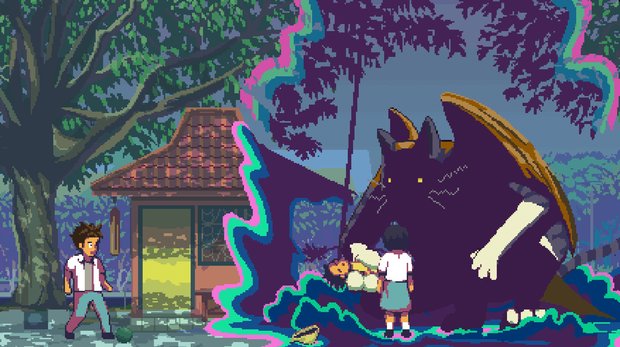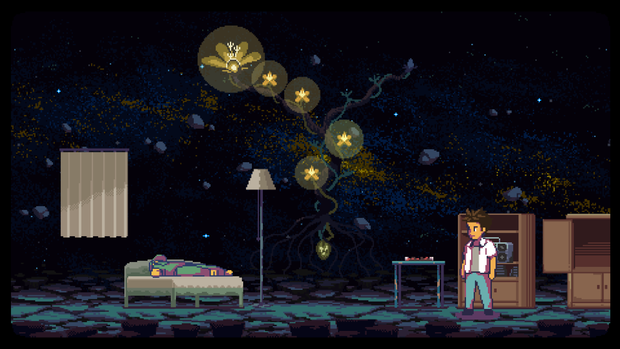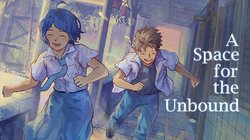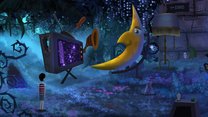A Space for the Unbound review – A riveting Indonesian drama takes off once freed from a slow start

- 0 Comments
A Tale of Two Cities is a wonderfully dark, albeit uplifting story that I would recommend to anyone. Yet I never would have finished it had Ms. Kubella not tethered my doing so to passing the 9th grade. As a teenager who grew up on Dean Koontz thrillers, I did not have the patience at first to trudge through the hours of character development leading up to the riveting and inspiring final act. I felt quite similarly after starting Mojiken’s narrative adventure A Space for the Unbound, a tale that also embraces themes of duality and transformation. The first several hours are indeed the worst of times, and I probably would have quit had I not been reviewing the game. But as with Dickens, I am delighted that I persevered to be rewarded with one of the most emotionally stirring games I have ever experienced.
You play as Atma, a high school boy in late-90s rural Indonesia who has a very close friend named Raya. They’re both a bit ambivalent about graduating but together they map out a bucket list (a term that didn’t exist in the 90s, but I digress) of things they want to do before the responsibilities of adulthood take over. While starting out on their adventure, Atma discovers a red book that allows him the ability to “space dive” into a person’s subconscious to help them face past trauma and make life-affirming decisions. Atma’s motivated to take these space dives because the parties involved are unwittingly blocking his attempts at completing the bucket list. He soon discovers, however, that Raya has a similar but more destructive superpower that can alter reality itself.
Gameplay is fairly standard as you walk around town, interact with townsfolk, pick up objects (including all those rare bottle caps from your bucket list), and name and pet every adorable kitty in town. The side-scrolling, story-driven adventure supports both gamepad and keyboard and both are pretty seamless. There are plenty of arcade-like mini-games that I found to be a bit easier on the gamepad, though your mileage may vary. Most conversations involve exhausting available topics and there’s never a way to fail a conversation. Most characters (including the cats!) have a lot of feelings about Atma, represented by emoji clouds over their heads.

The first third of game is an exercise in pointless tedium, unfortunately, as every attempt to work on the bucket list either requires Atma to go on painstaking fetch quests or play the aforementioned mini-games. The games range from sneaking around authority figures, throwing objects to distract animals, to even a literal Mortal Kombat-style arcade game. They’re fairly mundane, rather easy (especially at the beginning), and are often little more than a diversion. Three hours in and I had briefly met a couple dozen characters and walked around town a few times, all without any motivation to do so outside of this bucket list that I didn’t care about (especially since Raya too seemed to stop caring about it almost immediately).
The plot finally picks up when Atma starts space-diving those closest to Raya, which puts the two protagonists and their respective superpowers at odds. To say more would be a spoiler about the nature of the conflict, but it winds up causing chaos to reign and jeopardizing the fabric of space-time. Atma’s powers suddenly matter, and the bucket list takes a backseat to his frantic race to save the world and Raya with it. Even some of the cats get into it, with one of them developing quite the attitude and filthy mouth to match it.
At the same time, the puzzles become exponentially more interesting, especially after Atma acquires the ability to time travel, giving him the gift (or curse?) of being able to space-dive people’s subconciouses within other people’s subconsciouses across multiple timelines just to make one tiny fix to the present. The Inception-level logic at play I found to be devilishly satisfying. Courtroom scenes reminiscent of Phoenix Wright populate the subconscious of several characters, with Atma needing to find evidence and object to inconsistent testimony. One of my favorite puzzles involves an organic and clever use of algebra. It’s not especially difficult, though admittedly it could stop the game cold for those without the requisite math skills, especially since there’s no hint system of any kind.
While space-diving takes Atma to a trippy dream-like world, you’ll spend a lot of time bustling about town. You’ll run into a guy with a stand who’s there to fix people’s tires, and you’ll come across a food cart selling Es Legen, a local drink that comes from the tap water of palm trees. A stranger will try to turn you on to keroncong music, and you’ll find yourself immersed in the town-wide Lintang Festival. The atmosphere solidly captures its distinctive time and locale throughout, introducing players to Indonesian music, cuisine, rituals, and hordes of stray cats (and other animals). The anime-inspired pixel art graphics are consistently gorgeous, with a wide color palette and excellent use of shadows and perspective. The cutscenes are also used to great effect, with meticulously drawn close-ups that offer a sharp contrast from the otherwise gamified atmosphere to elicit pathos when it’s needed most.
The original soundtrack by Masdito “ittou” Bachtiar and Christabel Annora sports a whopping 72 numbers, and seemingly each one sets the mood for its own scene and character. There are also vocal tracks that perfectly capture the game’s themes of duality and loss, and I would gladly listen to every one of these again. My only critique is that the music rarely shuts off, as if the game doesn’t trust the player to stay engaged with the world’s natural ambience. Additionally, the clickety-clack of a typewriter unnecessarily accompanies every line of dialogue and detracts from the conversations.
It will take the average player around ten hours to see the main story. It’s hard to say if that’s too long, as in hindsight I discovered that nearly every dull moment I encountered at the beginning had purpose, culminating in a profoundly moving endgame that had me welled up in tears. I even found myself wishing to explore the world further to complete the bucket list items I missed, but several would have required another full playthrough to get them all. Then again, perhaps that’s a good thing, as I was able to spend more time basking in the afterglow of a gaming experience that ended up being very much the best of times.
Final Verdict
For those with enough patience to see it through, A Space for the Unbound becomes an intensely rewarding experience that pulls all the right heartstrings. While it starts out slow and tedious and perhaps focuses too much on light arcade sequences, eventually a multi-layered plot with clever puzzles accompanied by engrossing atmosphere and music emerge to treat those who stick with it. It may not be perfect, but this ambitious, culturally distinctive narrative adventure by Mojiken is an easy recommendation.
Hot take
If you can withstand a slow and meandering beginning, A Space for the Unbound will reward you with one of the more emotionally earnest and moving stories to be found in an adventure game.
Pros
- Layered plot with sincere dramatic themes
- Brilliant pixel art graphics accompanied by inspirational soundtrack
- A refreshing look into a culturally distinct time and place
- Cats!
Cons
- First several hours of gameplay are laborious and lack direction
- Arcade mini-games, while generally easy, are too frequent and too banal at first
Beau played A Space for the Unbound using a PC code provided by the game's publisher.

- Advertisement
- Help support AGH by advertising with us











0 Comments
Want to join the discussion? Leave a comment as guest, sign in or register.
Leave a comment